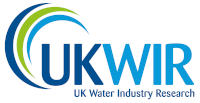BQ10 - How do we remove more carbon than we emit by 2050?
The areas that this Big Question covers include:
- Energy & Transport – decarbonise through avoidance, efficiency and alternatives to fossil fuels
- Process Emissions – minimised emissions through prevention, optimisation or capture
- Land Use & Carbon Capture – carbon sequestration potential maximised
- Investment & Procurement – minimised emissions in materials, consumables, products & services, credible offsets
- Customers – reduced emissions related to customer behaviour
- Cross-Cutting – low carbon, sustainable water cycle management
Have a look at the route map – this is a plan as to how we will answer our Big Question through research.
The route map has a number of key elements. At the top is our Big Question and then the Outcomes we need to achieve from the research programme -if we can achieve all these Outcomes we can answer the Big Question. You can also see the Key Benefits that will come from achieving the desired Outcomes.
Click on the Research Outcomes below to see the Projects that have been completed or are underway.
Scroll down further to see Case Studies explaining the impact of our research.
Research Outcomes
Research Impact - Case Studies
Carbon Accounting Workbook, Land Carbon Sequestration Tool & Calculating Whole Life Carbon
